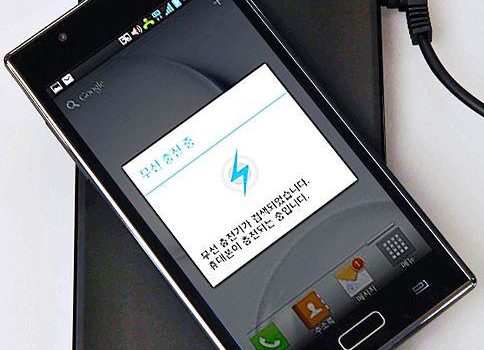What Does the Future of Wireless Electric Charging Look Like?
Wireless electric charging is more than just a cool new feature on the latest phones — It’s a signal of things to come. That’s because wireless charging enables faster charging speeds, greater convenience, and increased versatility.
Soon, most mobile devices will offer wireless charging capabilities. What’s more, many other electric devices, including cars, will feature wireless charging in the future. In fact, wireless charging will become so ubiquitous it will seem as mundane as plug-in charging is today.
Charging our Devices
The mobile web and the devices we use to access it have fundamentally changed our culture. While we rely on these devices to wirelessly navigate modern society, the models we use most often still require a wired connection to recharge. All that is changing as wireless charging contact or induction charging is becoming cheaper and easier to use, and new forms of wireless electric delivery are developed.
Charging pads, integrated furniture, and wireless charging features in automobiles are beginning to eliminate unsightly and inconvenient charging connectors and provide for greater versatility and usability during charging.
Wireless Charging for Devices in Cars
Wireless charging stations in cars will improve safety and connectivity by removing wires that can impede proper auto operation. Desktop charging won’t require users to plug their device into a computer or outlet. Bedside wireless charging is optimal for those who often forget to plug-in their phone at night.
Integrated Furniture
One of the least visible yet most dramatic changes that wireless charging is bringing about is integrated furniture. Integrated furniture blends function with fashion to create desks, nightstands, workspaces, and other furniture pieces that provide wireless charging capabilities. This has immediate advantages over traditional wiring in a number of ways.
1. A Much Cleaner Aesthetic
If you’re using integrated furniture in your office, storefront, or restaurant you can provide your staff and clientele with a visually clean charging experience. Wires and other connective cables can often look like clutter, even when well organized, wireless charging eliminates this issue.
2. More Options
Employees who use tablets and phones to take orders, check inventory, and process sales won’t have to worry about a low battery, as devices with wireless charging can be charged anytime they’re set down. Workspaces can be placed in optimum locations without considering if an outlet is close enough to charge important devices.
3. Greater Functionality
Mobile devices are kept fully charged during use and keep staff focused on tasks. Integrated furniture can quickly charge multiple devices simultaneously.
Integrated furniture is already being designed by IKEA and implemented by organizations like Starbucks. As integrated furniture becomes more and more commonplace you’ll never have to worry about a dead battery again. Soon, you won’t need to plug-in your device, it will recharge every time you set your tablet on your work desk, place your phone in the cradle of your car, or check your emails at your local coffee shop.
The Rise of Electric Vehicles

Wireless charging isn’t just for our phones and tablets. It will also for our vehicles. Most electric vehicles power up at wired charging stations, but as the number of electric cars on the road grows, new solutions for delivering charge to cars and trucks on the go could be coming to a road near you.
Road 983 in Sweden recently became the world’s first public electric road. Sensors underneath specially equipped vehicles drop connectors that fit into a conductive electric rail in the road, powering them as they drive.
The Growing Electric Demand
Bloomberg reports that sales of EVs reached 1.1 million in 2017 and are expected to reach 60 million by 2040. That would account for 55% of the global new car sales in a little more than 20 years. In other words, the future of vehicles are electric and that future requires electric charging. That charging station or electric rail will grow from a community oddity to a neighborhood staple in a few short years.
Wireless charging is an integral aspect of the rise of EVs. Nearly every major electric car manufacturer has plans to introduce hands-free, inductive charging for their electric models in the future. This means more and more EV charging infrastructure will be needed.
Government Funding
Local and federal governments understand the benefits of creating this infrastructure now, at the beginning of the shift toward EVs and wireless charging. That’s why many governments are offering incentives and tax credits for business and property owners that install wireless charging stations. In fact, it can even be a way for property owners to save money and attract new clients, customers, and tenants.
The only way that EVs can supplant traditional combustion vehicles is to offer similar convenience, range, and dependability. Wireless EV charging will help make that a reality.
The Internet of Things
Much like electric vehicles, the Internet of Things (IoT) is more than a trend or fad—it’s the future, and it’s already here in some ways. IoT is the concept that formerly isolated objects like thermostats, refrigerators, doorbells, home security, and home entertainment systems, and even light bulbs can now be interconnected over the internet through the power of cloud computing and mobile data storage.
The devices that are truly bringing the IoT into our homes and into the mainstream are smart-home control units. These are devices like the HomePod from Apple, Echo from Amazon, or Google Home.
They can read your emails, respond to texts, play your music, answer basic questions and control other objects in your smart home. But of course, all of these devices require power—right now that means they need to be plugged in.
Wireless charging of IoT devices and control units will help bring about the full realization of the IoT. Wireless charging will help free up IoT devices to unlock their complete potential, bringing about greater flexibility and adaptability.
The Future Our Parents Were Promised
Much like the wireless internet before it, wireless charging will change our day to day lives in ways we can’t even imagine. And it’s right around the corner. Wirelessly charging autonomous vehicles will change the way we transport goods and people. Electric roads will charge EVs as they travel, cutting down on pollution, accidents, and energy waste.
Power From Space
The Japanese Aerospace Exploration Agency (JAEA) believes they may be able to beam power to earth from satellites via microwaves. Satellites that harness the unending power of the sun could provide limitless, pollution-free power — a super powerful kind of wireless charging all it’s own.
Wireless charging can offer us the future our parents were promised. Technology, when freed from a wired connection and powered by the collective data processing of cloud computing will generate new and amazing possibilities.
Transportation will become quicker, more easily controlled, and cause less pollution. Homes will become a cohesive unit with better security features and better living features. Our power grids and power infrastructure will become smarter and more dynamic, helping us cut down energy waste.
Wireless Charging Is The Future
Wireless charging has the capability to bring about a revolution in the way we interact with and use technology. It will offer more convenience, greater flexibility, and even help us minimize pollution and energy waste. The future of wireless charging is already here and we’re only just beginning to understand its innumerable possibilities.
Author Bio:
David Olson is a writer, eBook author, and content strategist for tech companies including PCNation. He specializes in the latest developments in technology and how they help companies communicate with evolving consumer bases worldwide.

















